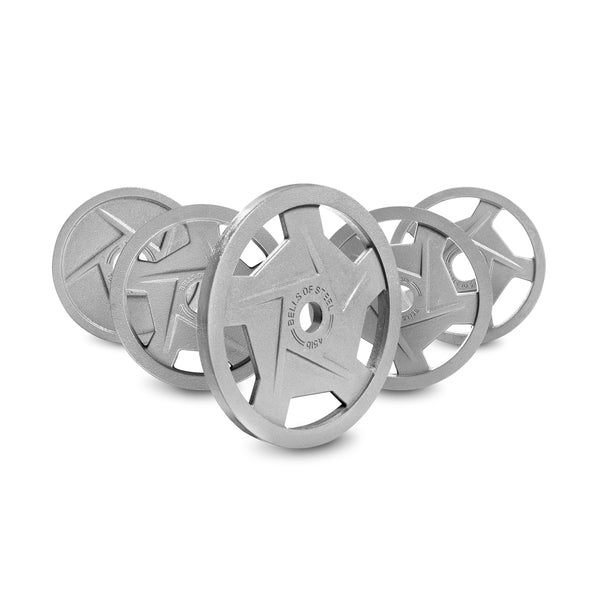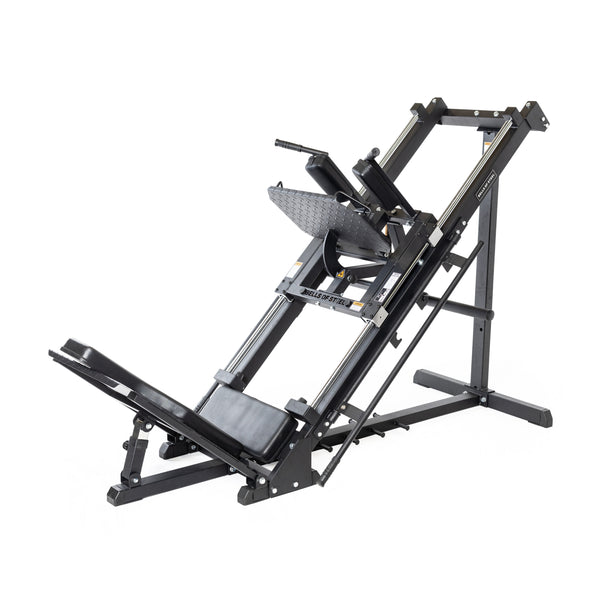But how deep should you hack squat to get the most out of this movement?
The answer depends on your goals, your anatomy, and your comfort level. In this article, we’ll explore the benefits and drawbacks of different hack squat depths, and give you some tips on how to find your optimal range of motion.

How Deep to Hack Squat
There are three main depths that are most frequently used on the hack squat machine, each one varies based on the machine’s range of motion and your mobility.
Parallel Hack Squat Depth
Parallel depth is when the crease of your hips dip below the top of your knee when looking from the side. This is the minimum depth that you should aim for, as it ensures that you complete a full range of motion and activate your muscles effectively.
Parallel depth is also the standard depth for powerlifting competitions, so if you’re training for strength and performance, this is a good depth to stick to. It also helps you keep your reps consistent and avoid cheating by bouncing out of the bottom.
However, parallel depth may not be enough for some people who want to maximize their muscle growth and challenge their muscles in different ways. That’s why some people prefer to go deeper than parallel.
Full Hack Squat Depth
Full depth is when you go as low as you can in the hack squat, without compromising your form or causing pain. This is the maximum depth that you can achieve, and it has some advantages over parallel depth.
Full depth allows you to recruit more muscle fibers, especially in your glutes and hamstrings, and create more metabolic stress and muscle damage. These are key factors for hypertrophy, or muscle building. Full depth also increases your joint range of motion and flexibility, which can prevent injuries and improve your mobility.
However, full depth is not for everyone. Some people may have anatomical limitations that prevent them from going too low, such as tight hips, ankles, or knees. Others may experience pain or discomfort in their lower back or knees when they go too deep. That’s why you should always listen to your body and find your own comfortable depth.
Pain-Free Hack Squat Depth
Pain-free depth is the depth that you can hack squat without feeling any pain or discomfort in your joints or muscles. It’s most applicable if you have sensitive knees, hips, or back.
Pain-free depth may vary from person to person, and from day to day, depending on your individual anatomy, mobility, and recovery. Some people may be able to go full depth without any issues, while others may have to stop at parallel or even above parallel.
The key is to find your own pain-free depth and work within it. Don’t force yourself to go deeper than you can handle, as this can lead to injury and chronic pain. Instead, try to gradually increase your depth over time, by improving your mobility, warming up properly, and using good form.
How Deep to Hack Squat Final Thoughts
Hack squats are a versatile and effective exercise that can help you build muscle, strength, and power in your lower body. However, there is no one-size-fits-all depth for hack squats.
The best depth for you is the one that suits your needs and preferences. Experiment with different depths and find your sweet spot!




